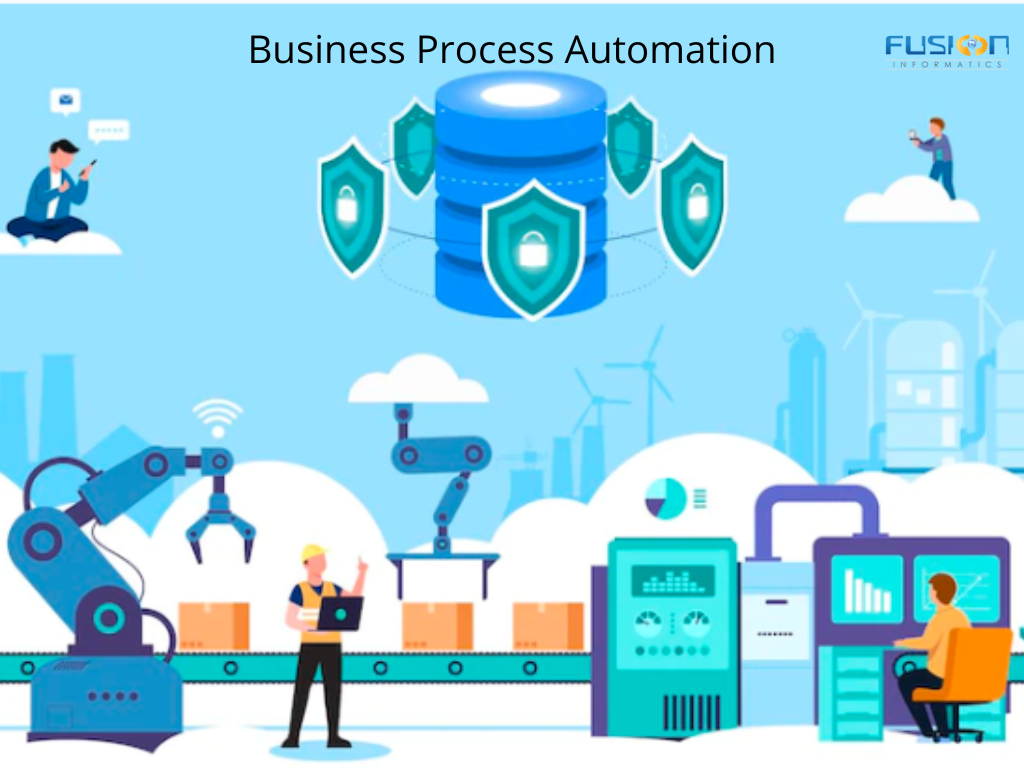Modern enterprises are in a never-ending quest for inventive methods to streamline their operations, lower expenses, and boost efficiency. The advent of the digital transformation era has brought forth a fresh wave of automation, with Robotics Process Automation (RPA) and Artificial Intelligence (AI) taking center stage. In this blog, we’ll delve into how RPA is reshaping contemporary businesses by automating intricate business procedures, its advantages, and pointers for a prosperous implementation.
The Evolution of Business Process Automation
Once upon a time, business process automation was synonymous with industrial control systems like SCADA and PLCs, primarily used in manufacturing and industrial settings. These systems automated physical processes, bridging the gap between field controllers and digital terminals. However, today’s business process automation services have transcended industrial hardware, reaching into the heart of enterprise software systems such as Enterprise Resource Planning (ERP) and Customer Relationship Management (CRM). Software bots, often referred to as RPA and Business process automation agents, are the new protagonists, automating a wide array of enterprise processes.

The Benefits of RPA
The adoption of RPA by Chief Information Officers (CIOs) is driven by several compelling benefits:
- Elevated Productivity: RPA agents operate tirelessly, 24×7, without human intervention. This non-stop work ethic forms the foundation for increased productivity, freeing up human resources for more complex tasks.
- Streamlined and Effective Processes: RPA eliminates the errors often associated with repetitive human tasks, resulting in streamlined processes. Fewer manual interactions across departments mean fewer errors and increased efficiency.
- Increased Accuracy: RPA agents excel in processing vast amounts of data in sectors like finance, healthcare, and industry, offering unparalleled accuracy compared to human-mediated processes.
- Cost Efficiency: RPA not only reduces labor costs associated with digital workflows but also enhances the scalability of these processes. As a result, RPA projects frequently yield substantial Return on Investment (ROI).
- Improved Digital Interconnection and Collaboration: RPA bridges the gap between diverse digital systems and applications, promoting interoperability across different enterprise departments and organizations.
Guidelines for Successful Process Automation Deployments
To harness the full potential of RPA and Business process automation, enterprises must adopt a holistic approach, considering technology, organization, and management aspects. Here are some crucial guidelines for successful RPA deployment:
- Process Identification and Business Process Reengineering (BPR): Identify problematic processes that need improvement through automation. Invest in designing new RPA-enabled processes using a Business Process Reengineering (BPR) approach. RPA isn’t just about automating existing processes; it’s an opportunity to revamp and optimize them.
- Employees’ Awareness and Training: Raise awareness about automation within the organization and provide comprehensive training for employees. This empowers them to integrate and use RPA processes alongside traditional workflows effectively. RPA awareness is a critical asset that can determine the success of any RPA project.
- Technology and Consulting Services Selection: Carefully select RPA technology partners and consultants with experience in integrating legacy enterprise systems and processing data from these systems. Compatibility with existing infrastructure is key to a smooth deployment.
- Benchmarking and Evaluation: Define Key Performance Indicators (KPIs) and establish an effective benchmarking process to measure and quantify the improvements brought about by RPA. This ensures continuous improvement throughout the RPA project’s lifecycle.
Industry-Specific Applications of RPA
RPA is a versatile tool with applications across various industries. In finance, it can automate invoice processing and auditing, reducing errors and speeding up financial transactions. In healthcare, RPA can handle patient data management, appointment scheduling, and claims processing, ensuring accuracy and improving patient care. Additionally, in retail, RPA can manage inventory, order processing, and customer service inquiries, enhancing supply chain efficiency and customer satisfaction.
Overcoming Challenges in RPA Implementation
While the benefits of Robotics process automation services are clear, successful implementation can be challenging. Enterprises must navigate issues like data security, compliance, and the potential displacement of human workers. Effective change management and a clear communication strategy are essential to address employee concerns and ensure a smooth transition to RPA.
The Future of RPA: Cognitive Automation
The evolution of RPA is leading toward cognitive automation, where machines can perform tasks that require understanding and learning from unstructured data. This includes natural language processing (NLP) for handling customer inquiries and sentiment analysis for understanding customer feedback. Cognitive automation holds the promise of further enhancing business processes by enabling machines to make decisions and adapt to changing circumstances.
RPA and Customer Experience Enhancement
RPA plays a crucial role in improving customer experiences. By automating routine tasks, such as order processing and query resolution, RPA ensures faster response times and greater accuracy in customer interactions. Moreover, chatbots powered by RPA can provide 24/7 support, enhancing customer satisfaction and loyalty.
RPA in Regulatory Compliance
Enterprises operating in highly regulated industries, such as finance and healthcare, can benefit significantly from Robotics process automation services in ensuring compliance with complex regulations. RPA bots can automate data collection and reporting, reducing the risk of human errors and costly regulatory violations.
The Role of RPA in Disaster Recovery and Business Continuity
RPA can play a crucial role in disaster recovery and ensuring business continuity. By automating critical processes, RPA ensures that essential operations continue seamlessly even in challenging circumstances, minimizing downtime and financial losses.
RPA as a Catalyst for Innovation
RPA is not just a tool for optimizing existing processes; it can also be a catalyst for innovation. By automating routine tasks, RPA frees up human resources to focus on creative and strategic endeavors, driving innovation within organizations.
Conclusion
The digital transformation journey undertaken by contemporary enterprises has led them to embrace the immense potential of Robotics process automation services and Artificial Intelligence (AI). RPA’s remarkable capacity to streamline and mechanize intricate business procedures, complemented by its multifaceted advantages, has firmly established it as a cornerstone of efficiency and productivity in today’s corporate arena.
By diligently adhering to the prescribed guidelines for effective deployment, enterprises can fully unleash the capabilities of RPA, resulting in cost reductions, heightened precision, and the empowerment of their workforce to concentrate on tasks that demand human ingenuity. As we advance into the future, RPA is poised to maintain its pivotal role in shaping the landscape of enterprise automation.


